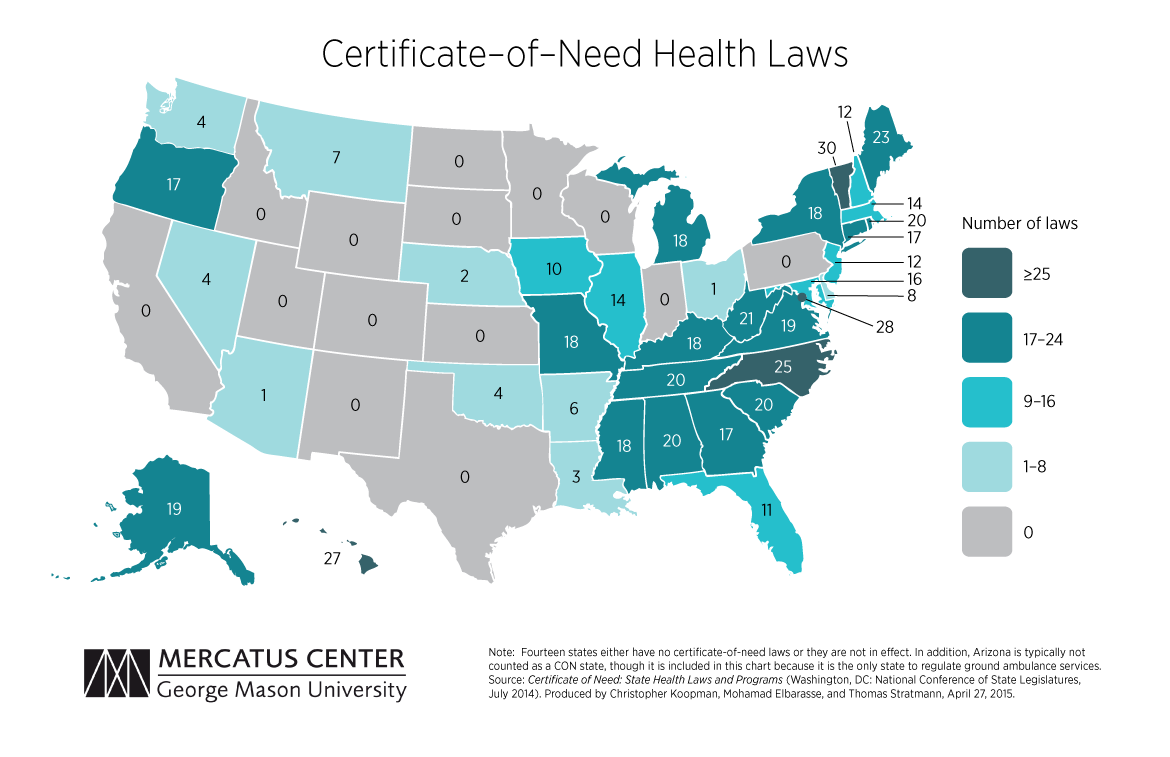- | Healthcare Healthcare
- | Data Visualizations Data Visualizations
- |
How State CON Laws Restrict Access to Health Care
The existence of a CON program is detrimental to the welfare of the residents of the state, regardless of the number of restrictions. Even for states with only a few restrictions, Stratmann and Russ find that the presence of a CON program in a state is associated with fewer hospital beds, Computed Tomography (CT) scanners, and MRI machines.
Certificate of Need (CON) laws in 36 states and the District of Columbia currently prohibit entry or expansion of health care facilities. They prohibit health care providers from entering new markets or making changes to their existing capacity without first gaining the approval of state regulators. The types of facilities, procedures, and medical equipment restricted by CON laws range from ambulatory surgical centers to Magnetic Resonance Imaging (MRI) scanners to hospital beds. These restrictions, which limit the supply of health care, are justified by the claim that they cross-subsidize charity care for the needy. However, recent research by economists Thomas Stratmann and Jake Russ finds no difference in the provision of charity or indigent care in states with CON programs and states without.
These restrictions, which limit the supply of health care, are justified by the claim that they cross-subsidize charity care for the needy. However, recent research by economists Thomas Stratmann and Jake Russ finds no difference in the provision of charity or indigent care in states with CON programs and states without.
The average state with a CON program regulates 14 services or procedures. Vermont tops the list as the most restrictive state, with 30 services or procedures regulated by CON laws. Arizona and Ohio fall at the bottom of the list with just one service or procedure restricted by their respective CON programs.
The existence of a CON program is detrimental to the welfare of the residents of the state, regardless of the number of restrictions. Even for states with only a few restrictions, Stratmann and Russ find that the presence of a CON program in a state is associated with fewer hospital beds, Computed Tomography (CT) scanners, and MRI machines.
For more information on the effects of CON programs and what they mean for your state, see our new research overview page on Medium.

